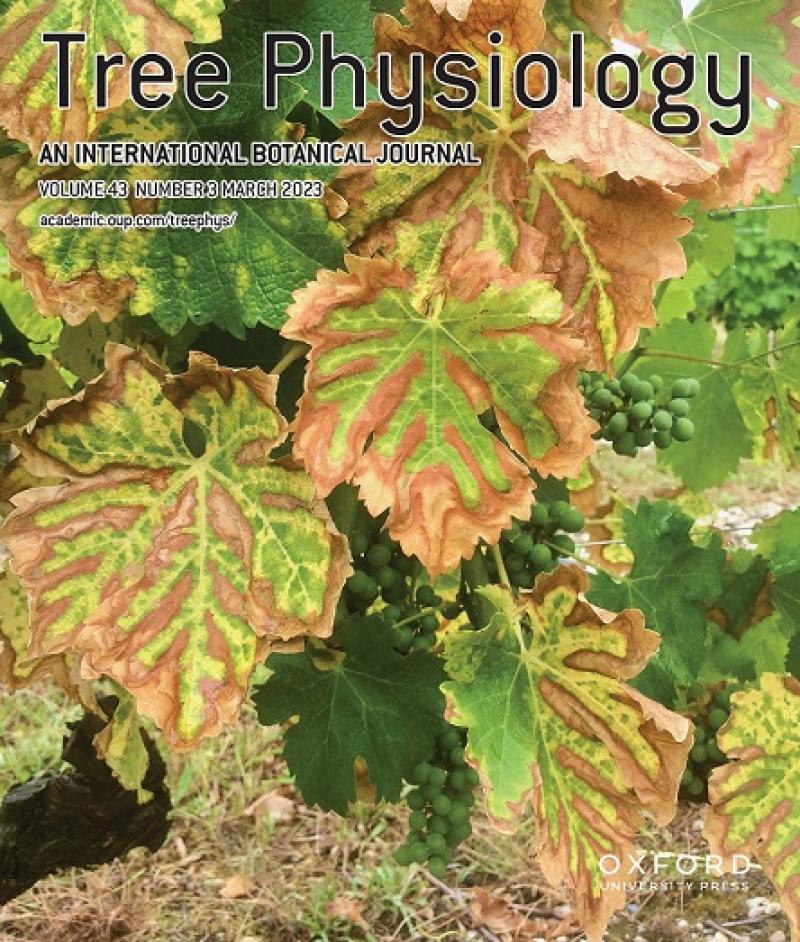Xylem anatomy may change in response to environmental or biotic stresses. Vascular occlusion, an anatomical modification of mature xylem, contributes to plant resistance and susceptibility to different stresses. In woody organs, xylem occlusions have been examined as part of the senescence process, but their presence and function in leaves remain obscure. In grapevine, many stresses are associated with premature leaf senescence inducing discolorations and scorched tissue in leaves. However, we still do not known whether the leaf senescence process follows the same sequence of physiological events and whether leaf xylem anatomy Is affected in similar ways.
In this study, we quantified vascular occlusions in midribs from leaves with symptoms of the grapevine disease esca, magnesium deficiency and autumn senescence. We found higher amounts of vascular occlusions in leaves with esca symptoms (in 27% of xylem vessels on average), whereas the leaves with other symptoms (as well as the asymptomatic controls) had far fewer occlusions (in 3% of vessels). Therefore, we assessed the relationship between xylem occlusions and esca leaf symptoms in four different countries (California in the USA, France, Italy and Spain) and eight different cultivars. We monitored the plants over the course of the growing season, confirming that vascular occlusions do not evolve with symptom age.
Finally, we investigated the hydraulic integrity of leaf xylem vessels by optical visualization of embolism propagation during dehydration. We found that the occlusions lead to hydraulic dysfunction mainly in the peripheral veins compared with the midribs in esca symptomatic leaves. These results open new perspectives on the role of vascular occlusions during the leaf senescence process, highlighting the uniqueness of esca leaf symptoms and its consequence on leaf physiology.
This study has been conducted by the ‘Santé et Agroécologie du Vignoble’ Department at INRAE in Bordeaux, in collaboration with the BIOVITIS group at the Institute of Grapevine and Wine Sciences (ICVV), the University of California David, The University of Quebec in Canada and the Marche Polytechnic University in Italy.
Results of this study has been published in Tree Physiology:
https://academic.oup.com/treephys/article/43/3/441/6842865
G. Bortolami et al. 2023. Esca grapevine disease involves leaf hydraulic failure and presents a unique premature senescence process. Tree Physiology 43:441-451.








